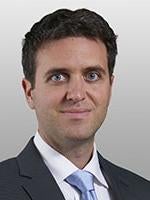In a November 9, 2018 speech, Federal Reserve Vice Chairman for Supervision Randal K. Quarles outlined potential adjustments to the revisions to the capital planning regime that the Federal Reserve proposed in April 2018. Governor Quarles also said he will ask the Federal Reserve to exempt banks with less than $250 billion in assets from the Comprehensive Capital Analysis and Review (“CCAR”) quantitative assessment and supervisory stress testing in 2019 in order to facilitate capital planning moving to a biennial exercise for such banks.
Governor Quarles emphasized that the adjustments “are not intended to alter materially the overall level of capital in the system or the stringency of the regime.” However, the cumulative impact of the changes outlined in his speech would be to ease the implementation of the SCB and streamline CCAR and capital planning.
The April 2018 proposal, which we previously summarized, would, among other things: (1) implement a stress capital buffer (“SCB”), equal to the amount of loss experienced in the severely adverse scenario in CCAR, to replace the capital conservation buffer in ongoing capital requirements; and (2) eliminate the quantitative objection in CCAR.
In his speech, Governor Quarles outlined several adjustments that the Federal Reserve is considering:
-
The Federal Reserve may adjust the operation of the capital planning rule so that a bank knows its SCB before it decides on its planned distributions for the coming year. This change would effectively eliminate the pass/fail aspect of CCAR and capital planning. The Federal Reserve would continue to test a bank’s ability to predict its stress losses and incorporate those losses into its capital planning through the supervisory process.
-
Governor Quarles would eliminate the qualitative objection in CCAR for the banks that remain subject to it, while continuing to evaluate a bank’s stress testing processes through normal supervision.
-
The Federal Reserve is reconsidering the requirement that the SCB include four quarters of dividends, and is looking for ways to encourage greater reliance on share repurchases, which the Federal Reserve assumes are easier than dividends for a bank to cancel in times of stress.
-
Governor Quarles would eliminate the stress leverage buffer that the Federal Reserve proposed along with the SCB in the April 2018 proposal. He would retain “static” leverage ratios, including the enhanced Supplementary Leverage Ratio, in the regulatory capital regime.
-
The Federal Reserve is considering ways of preserving the dynamism of stress testing while reducing its volatility and plans to seek comment on a proposal in this area in the not-too-distant future. At the same time, the Federal Reserve is exploring ways to incorporate multiple market shocks in its stress test (rather than a single market shock) without adding volatility to the results or increasing the compliance burden.
-
The Federal Reserve, along with the other federal banking agencies, may seek to change the current operation of capital buffers, which limit a bank’s capital distributions and discretionary bonus payments to a percentage of “eligible retained income” when the bank dips into its buffer. “Eligible retained income” is defined as net income for the prior four quarters, net of any distributions. In a strong economic cycle, when banks distribute all or nearly all of their income for the year, their eligible retained income could be zero or near zero. As a result, dipping into a capital buffer – by even a small amount – results in an immediate cessation of all capital distributions. Governor Quarles indicated that consideration is being given to making the rules “more consistent with the graduated intent.”
-
The Federal Reserve will issue guidance to make its stress testing more transparent, including publishing more detail about supervisory models, scenarios, and scenario design.
With these adjustments, the SCB will not go into effect before 2020. The Federal Reserve will issue a final rule to adopt the SCB in the near future, but will re-propose certain elements of the SCB framework. The Federal Reserve will also consider whether any elements of the April 2018 proposal can be implemented in the 2019 CCAR exercise, such as relaxation of assumptions related to balance sheet growth.




 i
i


